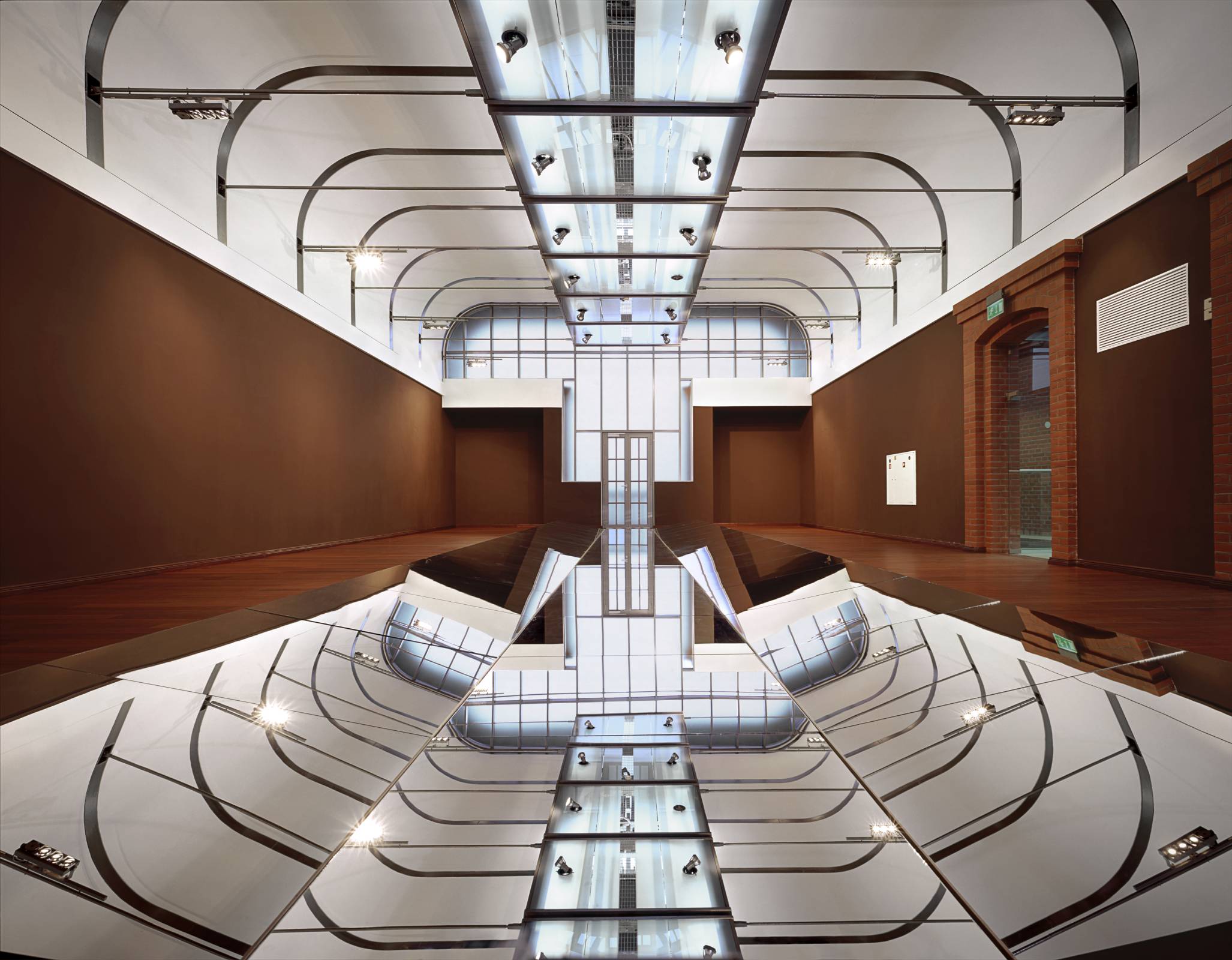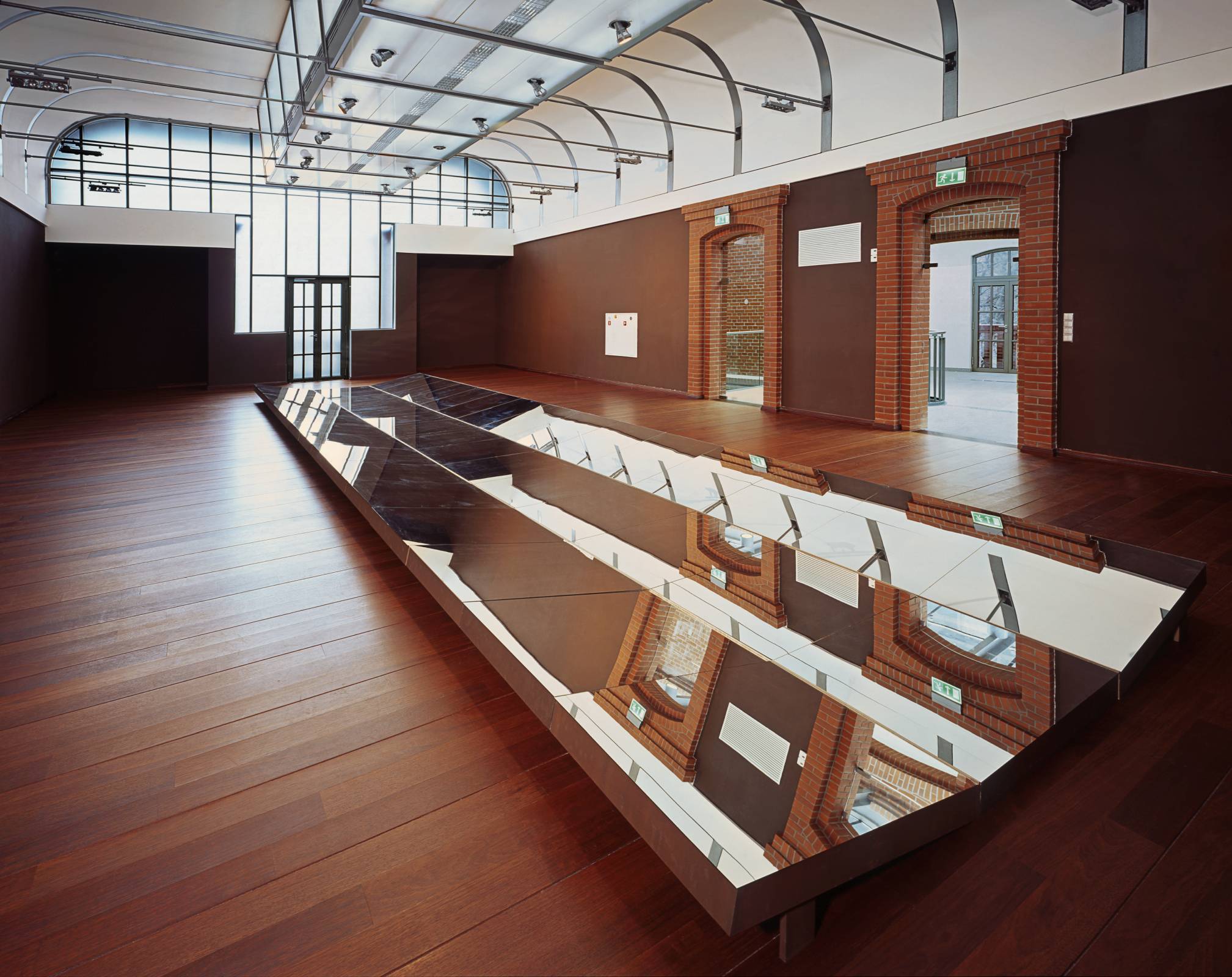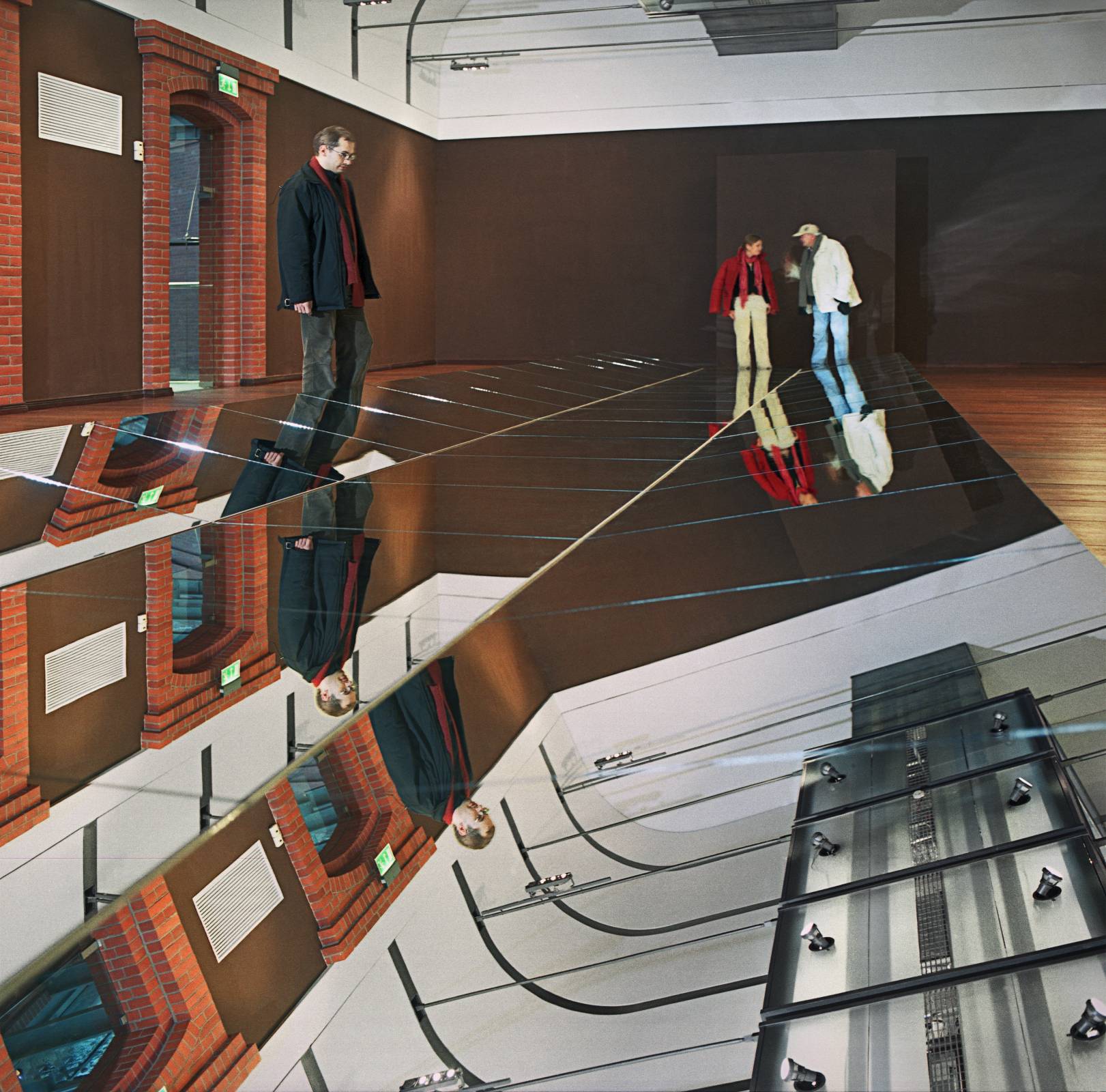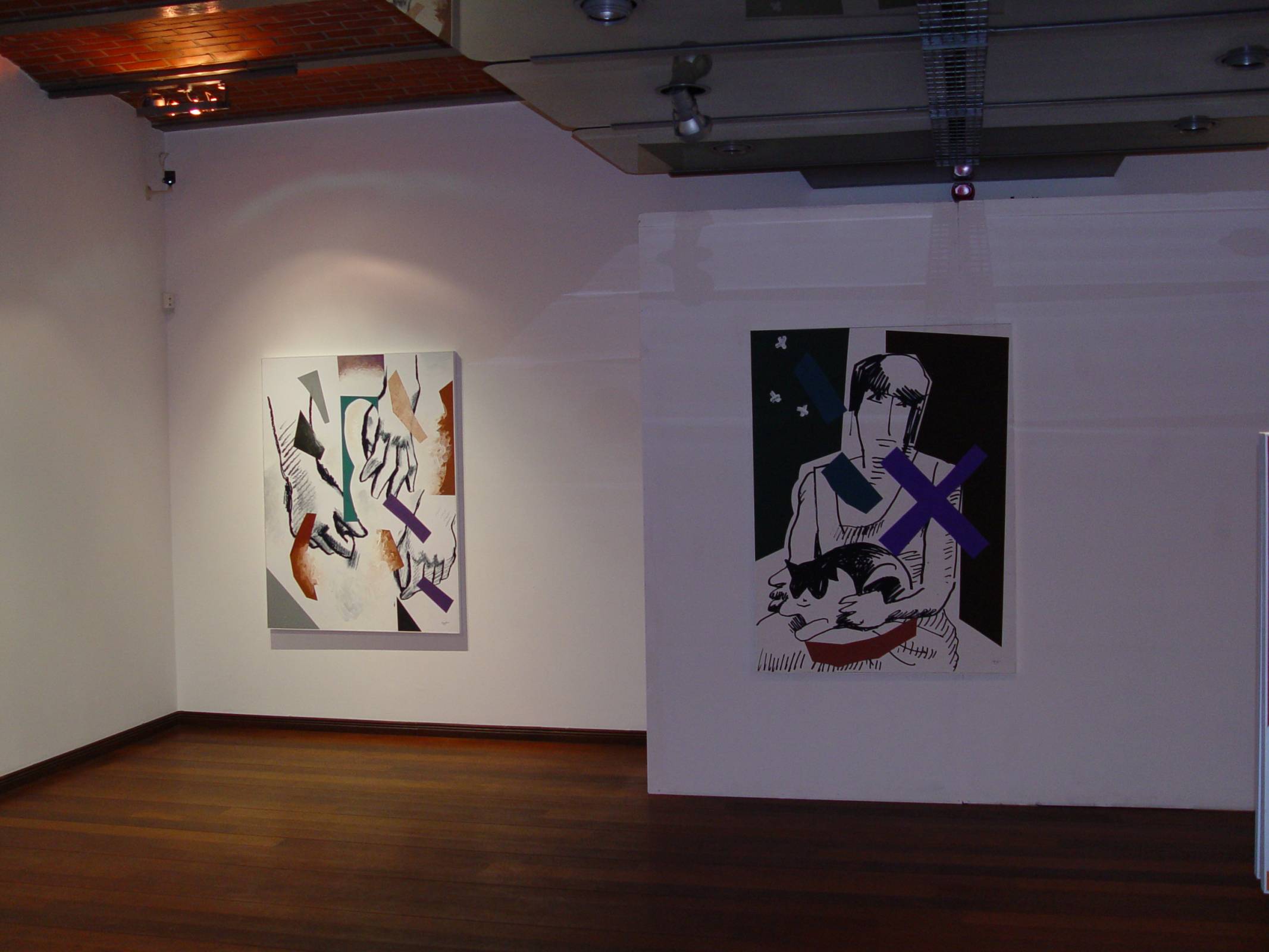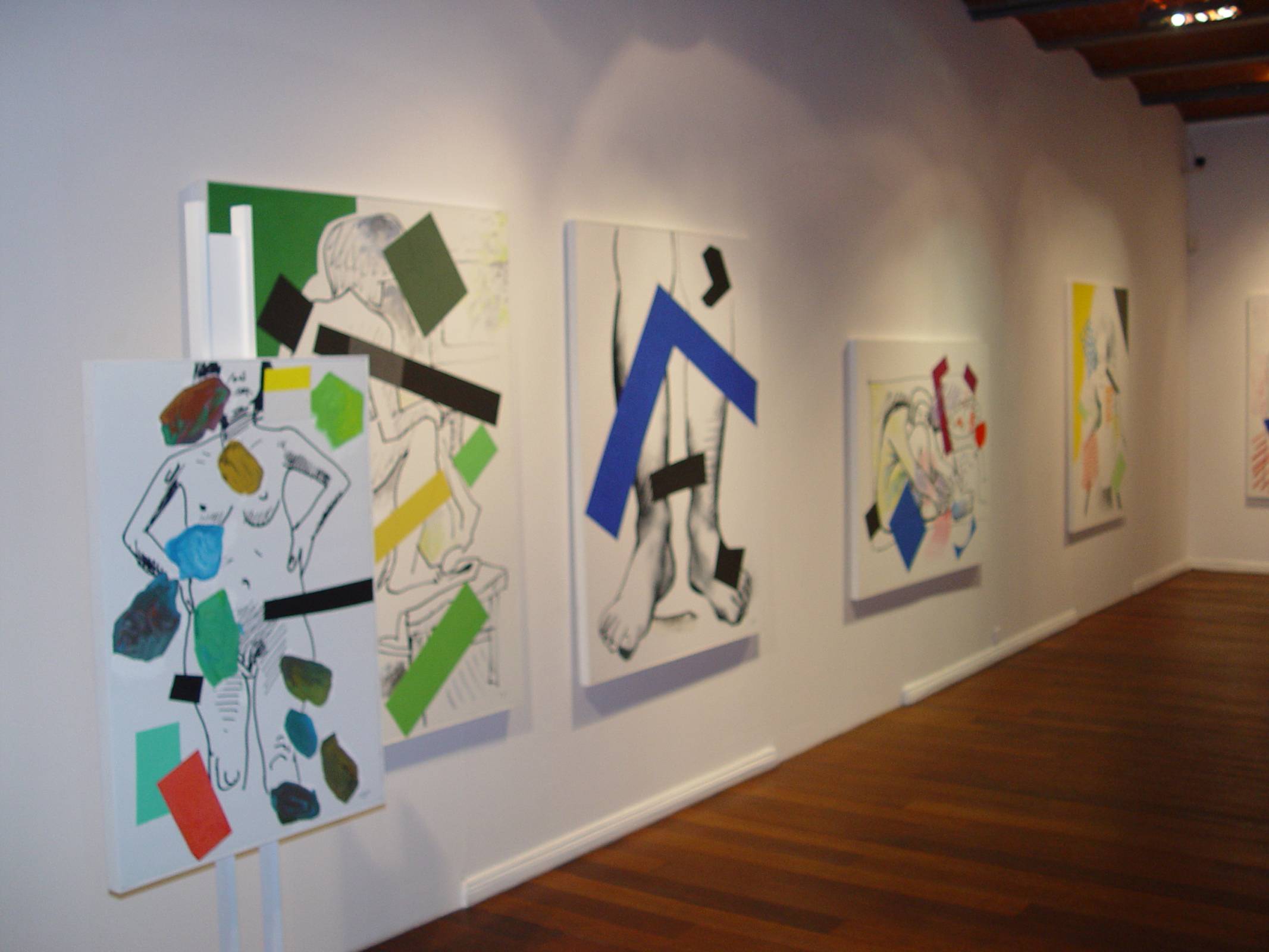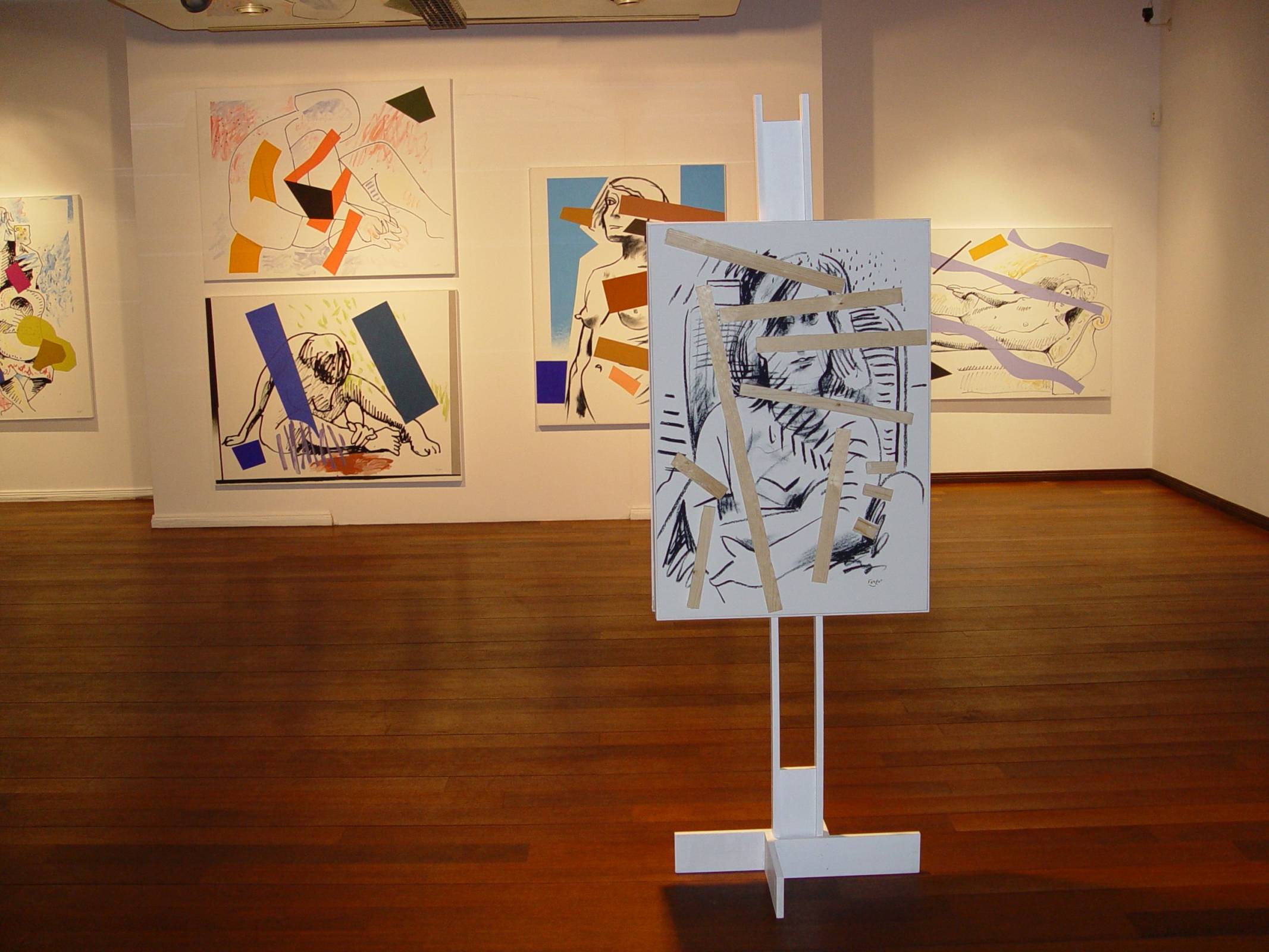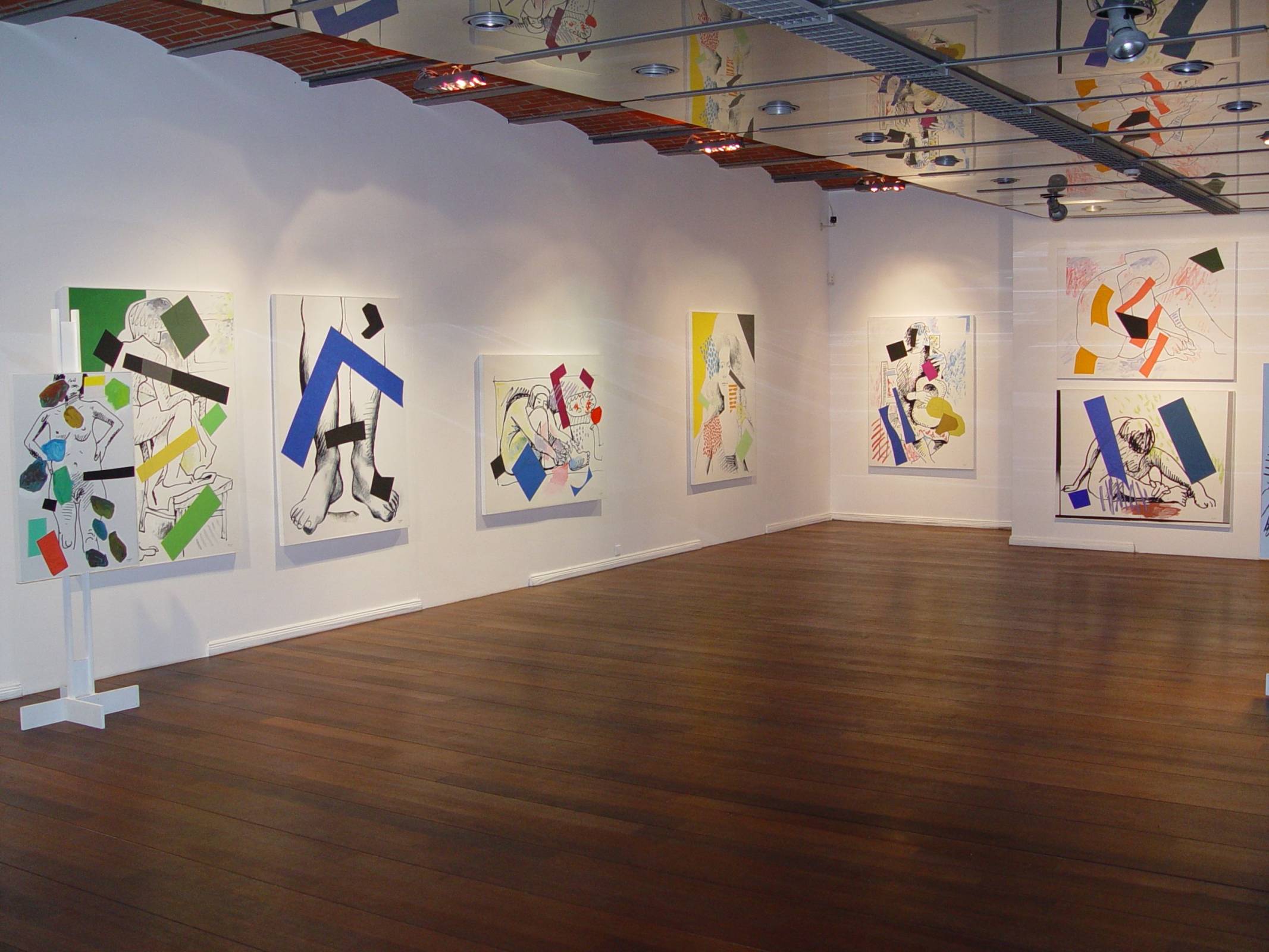Exhibition of the works by Wojciech Fangor and presentation of his site-specific installation. Being invited to Poznań and his visit to the Gallery spaces influenced the artist’s vision for the exhibition. He was greatly impressed with both exhibition rooms situated in the two-storey Galeria building claimedthe curator of the exhibition, Stefan Szydłowski.
Wojciech Fangor (1922-2015) was one of the greatest Polish artists of the 20th century. This socialistrealist painter, co-author of the world success of Polish poster art, earned his fame as one of the first artists who dealt with the subject of Environment, and a painter who continued and perfected op-art. Fangor is also the father of the concept of reversed perspective or what he called P.I.S. – “Positive illusory Space”. For the last 25 years he has been commenting on the situation of an artist in the world of electronic media, in the times of re-evaluation of the original and authenticity, fundamentals and traditions. For a long time he has been working abroad, mainly in the USA where he had spectacular success. Fangor was the only Polish artist who has had an individual exhibition at the prestigious Guggenheim Museum in New York.
At the exhibition in Galeria Stary Browar Wojciech Fangor showed a new series of paintings whose canvas were provocative drawings digitally enlarged to the size of 160 x 120 cm (63 x 47 inches). Through the use of computer they ceased to be drawings, were rid of their properties, and became raw matter like canvas or plain paper.
At the same time they remained to be a trace of the painter’s artistic past – because on their surface he painted, glued, and sketched other drawings, creating entirely new images and giving them a new form. This new form’s major quality is the tension between the old and the new, past and present, finished/complete and open/unpredictable. The paintings were hung not only on the walls of the gallery but also on stands specially designed by the author – their shape resembling those which he designed for Museum Schloss Morsbroich, Leverkusen in 1964.
The top floor of the Gallery appeared to Wojciech Fangor as more than merely a room to be filled up and arranged. It inspired him to create a site specific installation. On the principle that what cannot be hidden should be even more exposed he designed a system of mirrors which formed a network of fundamental interrelations between spectators, the form of lighting system, and the space itself. That project was a continuation of the artist’s concept of space which he initiated in the late 1950s. His famous environment Studium Przestrzeni (Study of Space) is the best example of such artistic thinking.
